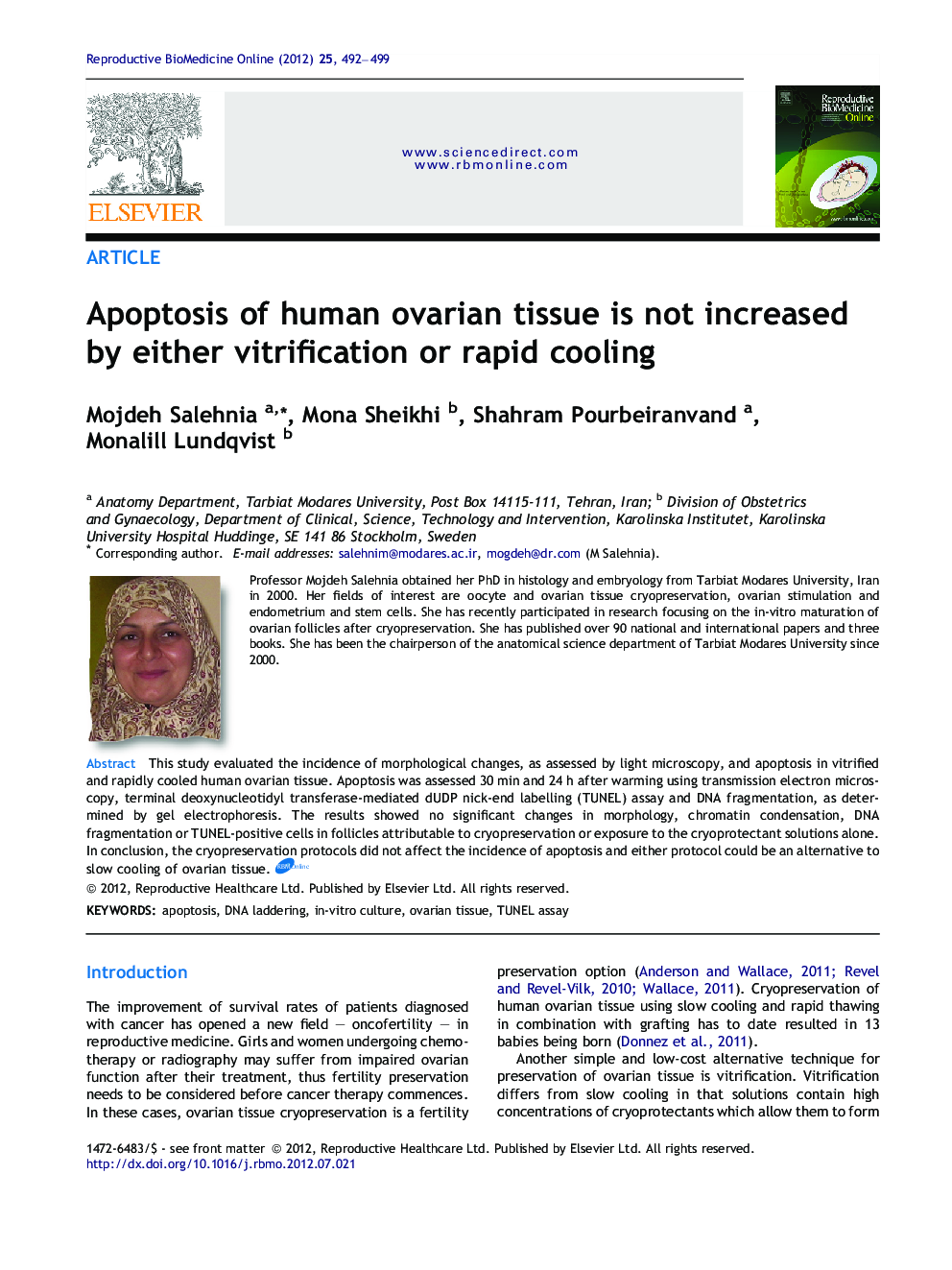| Article ID | Journal | Published Year | Pages | File Type |
|---|---|---|---|---|
| 3970585 | Reproductive BioMedicine Online | 2012 | 8 Pages |
This study evaluated the incidence of morphological changes, as assessed by light microscopy, and apoptosis in vitrified and rapidly cooled human ovarian tissue. Apoptosis was assessed 30 min and 24 h after warming using transmission electron microscopy, terminal deoxynucleotidyl transferase-mediated dUDP nick-end labelling (TUNEL) assay and DNA fragmentation, as determined by gel electrophoresis. The results showed no significant changes in morphology, chromatin condensation, DNA fragmentation or TUNEL-positive cells in follicles attributable to cryopreservation or exposure to the cryoprotectant solutions alone. In conclusion, the cryopreservation protocols did not affect the incidence of apoptosis and either protocol could be an alternative to slow cooling of ovarian tissue.This study evaluated the incidence of morphological changes, as assessed by light microscopy, and apoptosis in human ovarian tissue cryopreserved using two different methods, i.e. vitrification and rapid cooling. Apoptosis was assessed in tissue 30 min and 24 h after warming using transmission electron microscopy and terminal deoxynucleotidyl transferase-mediated dUDP nick-end labelling (TUNEL) assay and DNA fragmentation as determined by gel electrophoresis. The results showed no significant changes in morphology, chromatin condensation, DNA fragmentation or TUNEL-positive cells in follicles attributable to cryopreservation or exposure to the cryopreservation solutions alone. In conclusion, the cryopreservation protocols did not affect the incidence of apoptosis in human ovarian tissue and either protocol could be an alternative to slow cooling for the preservation of ovarian tissue.
